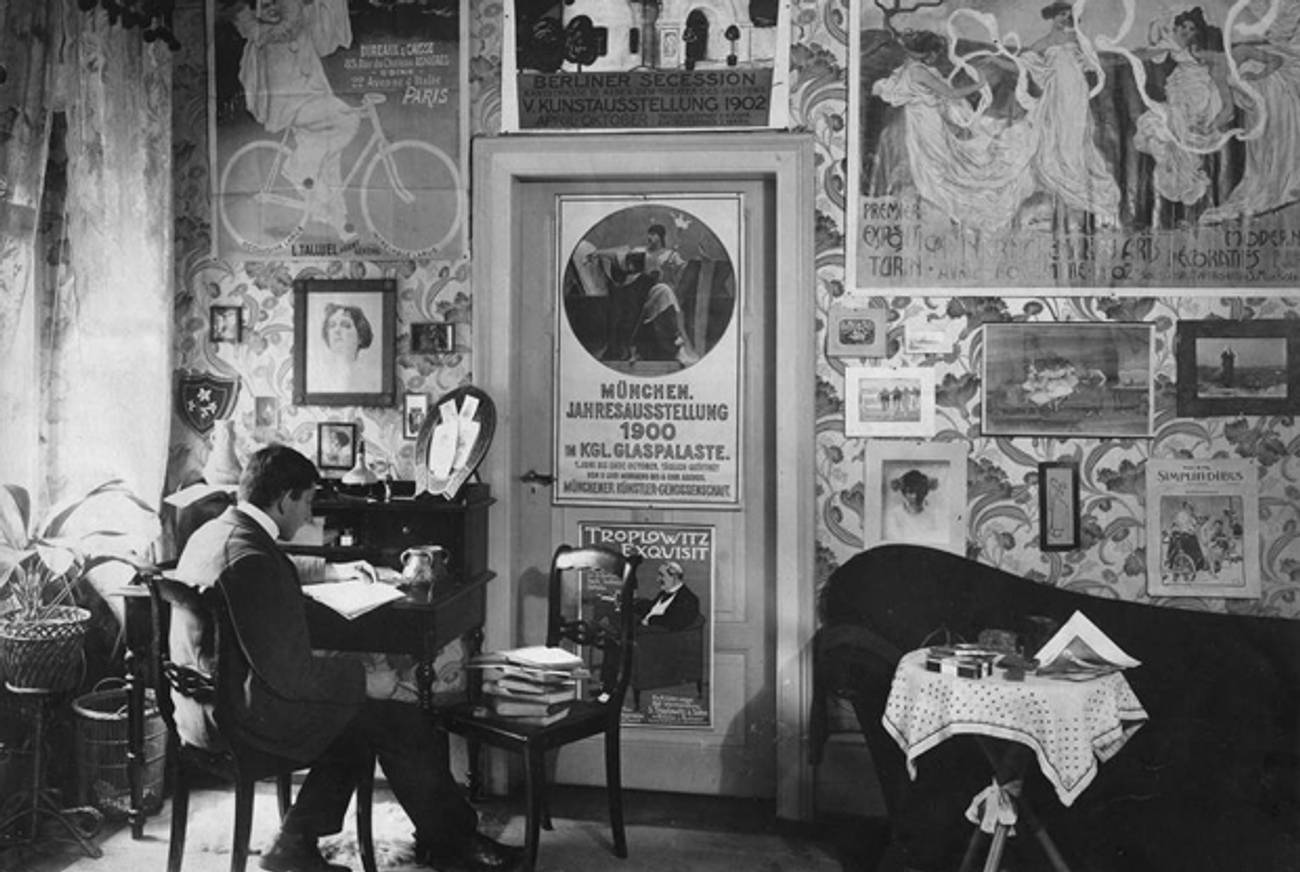Famous Jewish Poster Collection Up For Auction
Confiscated by the Nazis in 1938, Hans Sachs’ recovered collection is for sale




This weekend, the world’s finest collection of vintage posters will be up for auction in New York City, and the story behind the collection is as impressive as the 1,328 posters themselves.
Hans Sachs was a German Jewish dentist who began collecting posters as a hobby in 1895. Sachs recognized the compelling beauty and value of what was widely considered a less prestigious form of art than paintings and sculptures. As his hobby morphed into a passion, Sachs founded the first international poster collecting society in 1911, and later founded the poster magazine Das Plakat. By 1938, he owned more than 12,000 posters, the largest collection in Germany.
His poster collection went on display several times during the 1920s, and 1930s, but it also drew attention from the Nazis. During the 1930s, Hitler had placed a ban on “degenerate” art: virtually any sort of modern art that opposed his vision of beauty and reality. Some of Sachs’ posters fell under this category, while others were seen as desired pieces of art. Under the orders of Joseph Goebbels, who sought the poster collection for himself, Sachs was arrested in 1938, the night of Kristallnacht, and was sent to the Sachsenhausen concentration camp. Sachs managed to escape the concentration camp and fled to America, but he was told his legendary poster collection had been destroyed. In 1961, Sachs accepted $50,000 from the Western German government for reparations from the collection he believed no longer existed.
“Sachs had hidden some posters before he was arrested, and after he escaped the concentration camp, he sold some of his dear posters to make ends meet in America,” Arlan Ettinger, president of the Guernsey’s Auction House, the auction organizers, told me. “He lived his life sickened by the idea he had lost his collection. His son Peter, a retired airline pilot, kept seeing evidence point to the belief that the posters were still in Germany. Random posters were popping up in auctions during the 1980s, proving his father’s collection did, in fact, still exist.”
Peter Sachs turned into a self-appointed detective after his father passed away in 1974. His efforts paid off when, in 2005, he discovered a third of the poster collection was stored in a vault in the German Historical Museum. Presumably, the Soviets had seized the posters when World War II ended, and the collection ended up on the East side of the Berlin Wall, Ettinger explained. Sachs had labeled each of his poster with a distinct sticker, and after a legal confrontation launched in 2008, the posters were returned to the Sachs family earlier this year.
Peter Sachs, who passed away a few weeks ago, donated some 800 posters to universities and museums around the country, and decided to auction off the rest; the money will go to the Sachs family. When I asked Ettinger why the Sachs family was willing to part with a collection so rich with sentimental and historical value, he said that the posters were Hans Sachs’ passion, not Peter’s. Perhaps the discovery of the posters was enough in itself; in January, after a German court ordered the posters returned to the family, Sachs said in a statement, “I can’t begin to describe what it means to me on a personal level. It’s almost like a final gift to my father, a final recognition of the life and lost and never got back.”
According to Ettinger, half of the posters are likely the only existing copies. Most of the posters, which were on display at the National Bohemian Hall this week in advance of the auction, are still in incredible condition; Sachs had hired carpenters to create elaborate storage devices for the colletion, and his dedication to their preservation has certainly paid off.
This weekend’s auction is unique in that the pieces will be sold without minimum reserve, which means that every poster will be sold over the course of the weekend, and there are no minimum bids. So just attending the auction means you could go home with the sole copy of a pricless vintage poster with a remarkable history—that is, if you’re not outbid.
The Hans Sachs poster collection will be auctioned today, Saturday, and Sunday at the Upper East Side’s Bohemian National Gallery at 321 East 73rd St.
Chavie Lieber has written for The New York Times, New York Magazine, The Daily Beast, the Huffington Post, Business Insider, the Times of Israel, and more. Follow her on twitter @chavielieber.